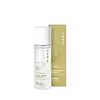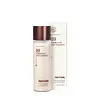What's inside
What's inside
 Key Ingredients
Key Ingredients

 Benefits
Benefits

 Concerns
Concerns

No concerns
 Ingredients Side-by-side
Ingredients Side-by-side

Water
Skin ConditioningGlycerin
HumectantButylene Glycol
HumectantSnail Secretion Filtrate
Skin ConditioningSodium Hyaluronate
HumectantCentella Asiatica Extract
CleansingNiacinamide
Smoothing1,2-Hexanediol
Skin ConditioningMalt Extract
Skin ProtectingPanthenol
Skin ConditioningPEG-60 Hydrogenated Castor Oil
EmulsifyingEthylhexylglycerin
Skin ConditioningSodium Polyacrylate
AbsorbentAllantoin
Skin ConditioningHydroxyethylcellulose
Emulsion StabilisingAdenosine
Skin ConditioningUlmus Davidiana Root Extract
Skin ConditioningCarum Carvi Fruit Extract
PerfumingDioscorea Villosa Root Extract
Skin ConditioningSalvia Officinalis Extract
AntimicrobialRosa Rugosa Leaf Extract
HumectantAchillea Millefolium Extract
CleansingCamellia Sinensis Leaf Extract
AntimicrobialEucalyptus Alba Leaf Extract
Skin ConditioningSmilax Medica Root Extract
TonicZingiber Officinale Root Extract
MaskingSea Water Extract
Skin ConditioningOryza Sativa Extract
AbsorbentNasturtium Officinale Extract
PerfumingAroma
Hydroxycitronellal
PerfumingLinalool
PerfumingWater, Glycerin, Butylene Glycol, Snail Secretion Filtrate, Sodium Hyaluronate, Centella Asiatica Extract, Niacinamide, 1,2-Hexanediol, Malt Extract, Panthenol, PEG-60 Hydrogenated Castor Oil, Ethylhexylglycerin, Sodium Polyacrylate, Allantoin, Hydroxyethylcellulose, Adenosine, Ulmus Davidiana Root Extract, Carum Carvi Fruit Extract, Dioscorea Villosa Root Extract, Salvia Officinalis Extract, Rosa Rugosa Leaf Extract, Achillea Millefolium Extract, Camellia Sinensis Leaf Extract, Eucalyptus Alba Leaf Extract, Smilax Medica Root Extract, Zingiber Officinale Root Extract, Sea Water Extract, Oryza Sativa Extract, Nasturtium Officinale Extract, Aroma, Hydroxycitronellal, Linalool
Saccharomyces/Xylinum/Black Tea Ferment
Skin ConditioningAdenosine
Skin ConditioningPolygonum Multiflorum Root Extract
Skin ConditioningZanthoxylum Piperitum Fruit Extract
Skin ConditioningDioscorea Villosa Root Extract
Skin ConditioningBrassica Oleracea Capitata Leaf Extract
Skin ConditioningPinus Densiflora Leaf Extract
AntimicrobialAchillea Millefolium Extract
CleansingCamellia Sinensis Leaf Extract
AntimicrobialEucalyptus Globulus Leaf Extract
PerfumingPaeonia Officinalis Root Extract
Skin ConditioningZingiber Officinale Root Extract
MaskingAngelica Keiskei Extract
AntioxidantOryza Sativa Extract
AbsorbentEclipta Prostrata Extract
Skin ConditioningLupine Amino Acids
Skin ConditioningSaccharomyces/Xylinum/Black Tea Ferment, Adenosine, Polygonum Multiflorum Root Extract, Zanthoxylum Piperitum Fruit Extract, Dioscorea Villosa Root Extract, Brassica Oleracea Capitata Leaf Extract, Pinus Densiflora Leaf Extract, Achillea Millefolium Extract, Camellia Sinensis Leaf Extract, Eucalyptus Globulus Leaf Extract, Paeonia Officinalis Root Extract, Zingiber Officinale Root Extract, Angelica Keiskei Extract, Oryza Sativa Extract, Eclipta Prostrata Extract, Lupine Amino Acids
Alternatives
Ingredients Explained
These ingredients are found in both products.
Ingredients higher up in an ingredient list are typically present in a larger amount.
Achillea Millefolium Extract comes from the yarrow plant. Yarrow is rich in antioxidants and fatty acids.
Adenosine is in every living organism. It is one of four components in nucleic acids that helps store our DNA.
Adenosine has many benefits when used. These benefits include hydrating the skin, smoothing skin, and reducing wrinkles. Once applied, adenosine increases collagen production. It also helps with improving firmness and tissue repair.
Studies have found adenosine may also help with wound healing.
In skincare products, Adenosine is usually derived from yeast.
Learn more about AdenosineCamellia Sinensis Leaf Extract is derived from the leaves of the tea plant. Black tea, green tea, and oolong tea are all harvested from this plant.
This ingredient has many skin benefits:
This ingredient contains polyphenols, a strong antioxidant. Antioxidants help fight off molecules that damage skin cells.
On top of that, the antioxidants in green tea neutralize free-radicals from the sun. This gives the skin some extra UV protection, but should not replace sunscreen.
Many components of tea have anti-inflammatory properties.
Polyphenols and L-theanine help soothe the skin and reduce irritation. The caffeine in Camellia Sinensis Leaf Extract helps calm inflamed blood vessels.
Other compounds found in tea include: Vitamin Bs, linoleic acid, magnesium, calcium, iron, and zinc.
Research has shown both drinking Camellia Sinensis Leaf Tea and applying it to the skin can help boost skin elasticity and hydration. Studies also show using tea extract may reduce sebum, or oil, production.
Learn more about Camellia Sinensis Leaf ExtractDioscorea Villosa Root Extract comes from the Wild Yam. Wild Yam has soothing and skin-conditioning properties.
Wild Yam Root contains diosgenin, a plant steroid. Diosgenin exhibits anti-inflammatory properties.
Emerging studies show diosgenin may help encourage skin cell turnover. By telling your skin to produce new skin-cells, Wild Yam root may help with reducing the signs of aging. Other studies are looking into the potential of Wild Yam Root to protect skin against UV damage. However, further research is needed to confirm these claims.
Wild Yam Root has been used in traditional medicine to treat arthritis.
Learn more about Dioscorea Villosa Root ExtractOryza Sativa Extract comes from the rice grain, Oryza sativa. Rice extract has wound healing, antioxidant, anti-inflammatory, and hydrating properties.
Rice grains contain numerous antioxidants which may help with anti-aging, such as vitamin E. Antioxidants help stabilize free-radical molecules. Unstable free-radical molecules may damage your skin cells and accelerate signs of aging.
A study from 2002 found rice to help increase the rate of wound healing. The same study found an improvement of skin barrier function in the patients after taking rice baths.
Numerous in-vitro studies have found rice water to help decrease sun damage by increasing collagen production and inhibiting the process of tyrosinase.
Long story short- tyrosinase is an enzyme that controls melanin production. Our bodies start producing melanin (AKA tanning) when exposed to UV radiation to protect against damage. Rice water is found to partially block this process.
Though more research is needed on rice's ability to help with UV protection, recent studies seem promising.
Wondering why rice is hydrating? The protein in rice have emollient properties. Emollients create a barrier on the skin to trap moisture in, keeping your skin moisturized.
Some rice extract may have mildly-exfoliating properties. These are mainly limited to Oryza Sativa (Rice) Bran and Oryza Sativa (Rice) Germ Powder.
This rice was first cultivated in China over 10,000 years ago. Many cultures throughout Asia have used rice water on skin and hair for centuries.
Learn more about Oryza Sativa ExtractZingiber Officinale is more commonly known as ginger.
Ginger root has antioxidant, anti-inflammation, and antimicrobial properties.
The antioxidant properties help protect your body from free-radicals. Free-radicals are molecules that may damage your skin cells. As a result, ginger may help slow down signs of aging such as hyperpigmentation and wrinkles.
Studies show ginger inhibits the enzyme that breaks down collagen. It also helps with:
This ingredient has no negative side-effects and is safe to use unless one has a specific allergy to it.
Ginger originates from Southeast Asia but has spread throughout the world. It is now a common spice used in many cultures.
Learn more about Zingiber Officinale Root Extract